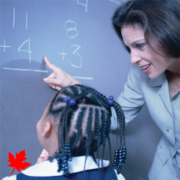Description
ASAP® Workbooks are available for professional development and school leadership programs for K-12 educators. Each workbook consists of four chapters of study and activities, which can be broken out weekly or monthly, culminating with a project or presentation to be shared at a group learning event.
The ASAP Workbooks are aligned with the requirements of the 2015 Professional Standards for Educational Leaders and your provincial leadership standards.
Workbooks are delivered digitally through your online ASAP account, where you can download and print copies for distribution within your school district on an as-needed basis.
Buy Workbook titles individually or save 20% when you purchase the entire library.
Workbook: Best Practices for Literacy
Literacy in K-12 education refers predominantly to the language literacy areas of reading and writing. A person with language literacy is able to understand and use language in effective and convincing ways. Language literacy includes the oral skills of speaking and listening. However, this module precludes the inclusion of these areas even though their importance and role is recognized here. Discussion of literacy in areas beyond language arts is provided in other resources.
Effective schools focus on student learning. The principal, as instructional leader, must possess a deep understanding of pedagogy, curriculum, and assessment. However, most principals receive “little or no training in the field of content knowledge in literacy instruction” (Children’s Literacy Initiative, 2000).
Language is a means to critical consciousness. Critical consciousness is developed and formulated as an essential activity of all learning to conceive of change and make choices to bring about transformations.”
Adapted by Ann E. Berthoff (1990) from the philosophy of Paulo Freire
Literacy teaching and learning has undergone several transformations through the years. Although the pendulum of reading instruction has swung back and forth several times, both alternate models and traditional theoretical models have been intermixed, to use an amalgam of elements of multiple philosophies. The current focus is on research that supports how students best learn to read and write. It is important to remember that writing and reading are simply two sides of the literacy coin. Both are best understood with the practice of the other. In addition, the rule of listening
and speaking are increasingly recognized as a fundamental aspect of the language learning process.
Past experiences influence present thinking to create a personal perspective about literacy. Understanding current best practices means continually challenging one’s perspective.









Reviews
There are no reviews yet.